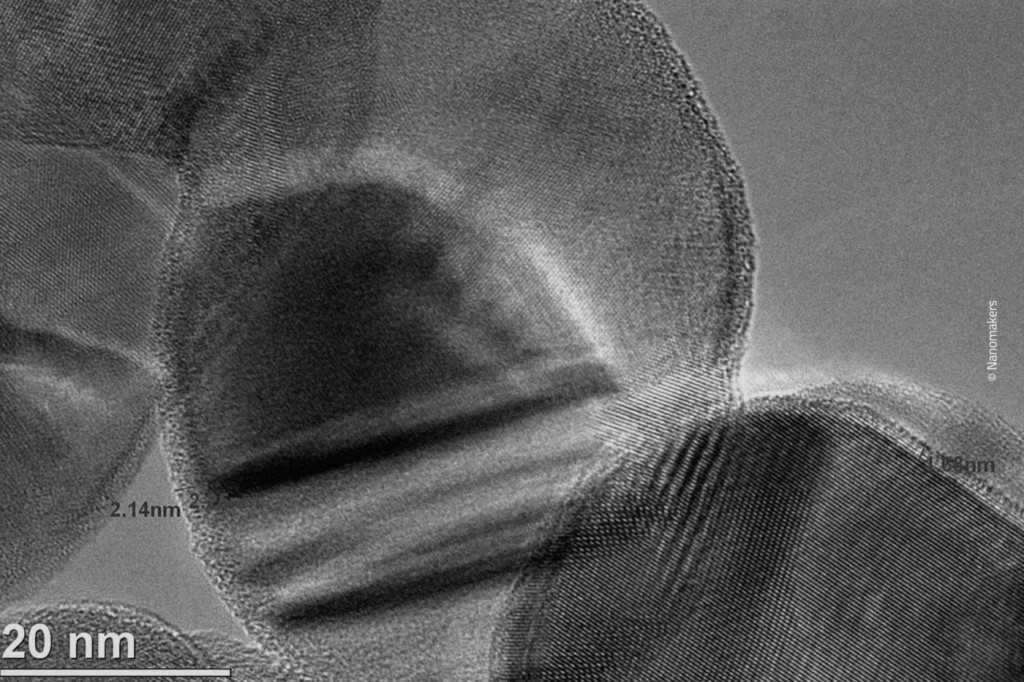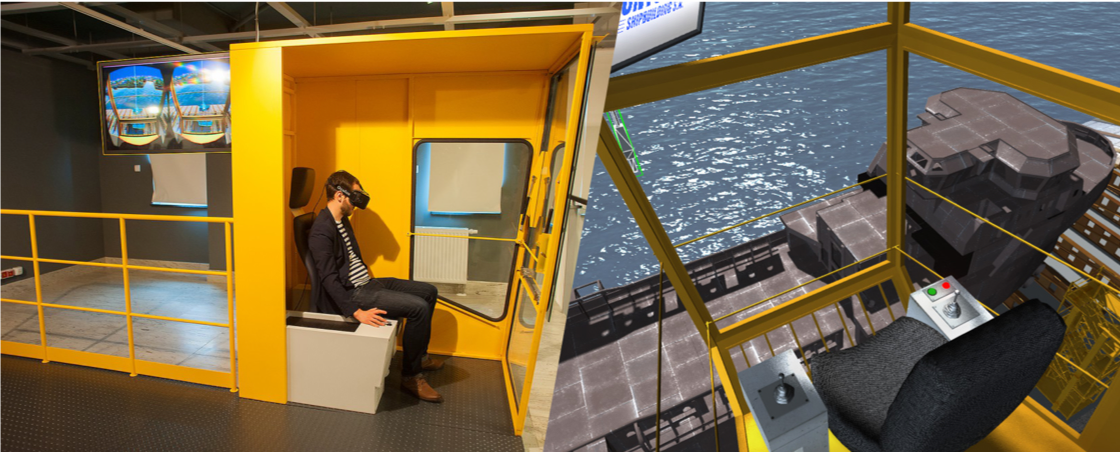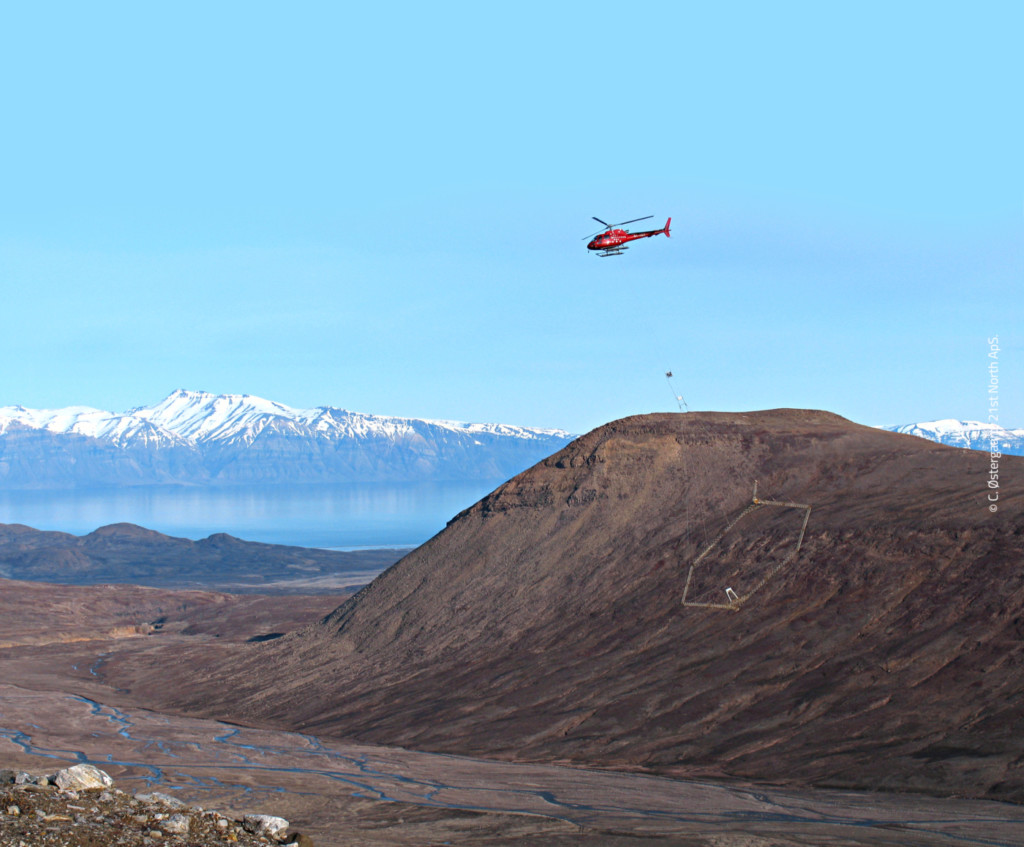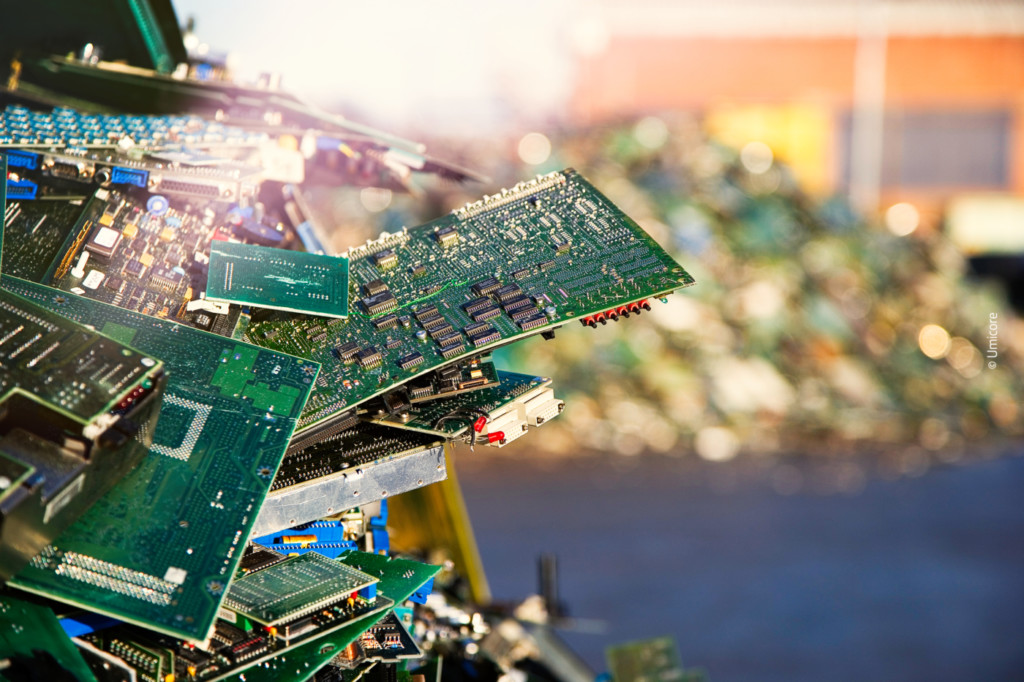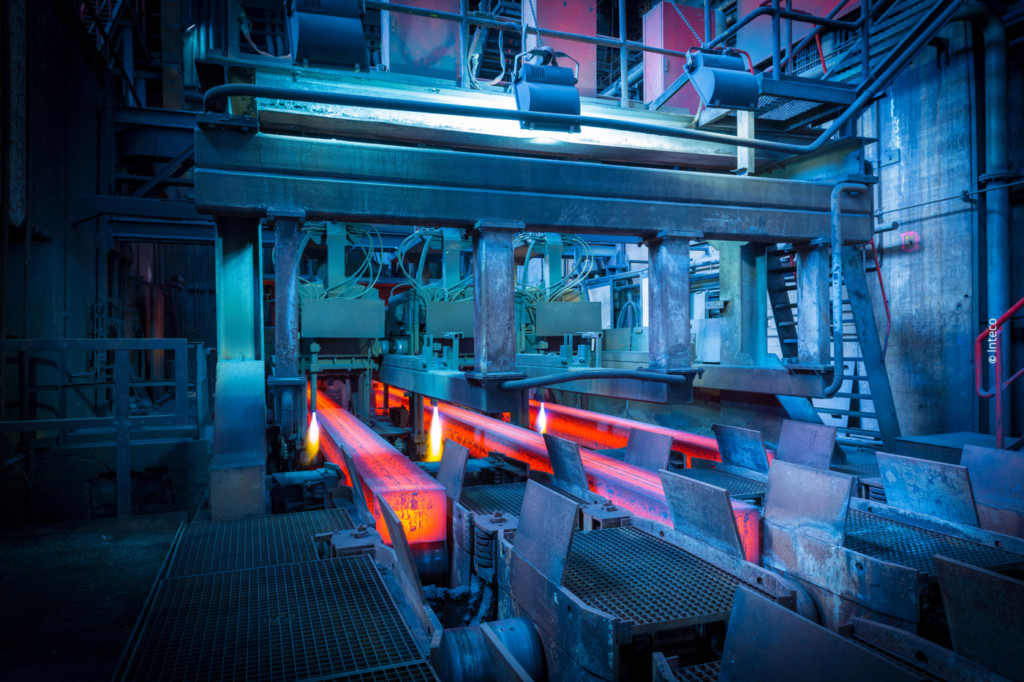EIT RawMaterials Projects
The ambitious vision of EIT RawMaterials is realised by the creation of a structured collaboration within the Knowledge Triangle, which is the basis of the EIT model.
Call for Innovation & Education Projects is now open!
EIT RawMaterials Projects Timeline
Virtual Upscaling: Virtual Upscaling through Modelling Factory
Virtual Upscaling: Virtual Upscaling through Modelling Factory
Project duration: 1 June 2016 – 31 December 2018
Objective
The idea in the Factory is to create a virtual working space, where individuals and organizations can test and share their ideas on how to advance material efficiency and circular economy by creating different types of computational models and solutions and to validate them against real provided scientific, industrial and environmental data.
The solution (technology)
The project will, by using upscaling cases from participating KIC partners, determine a sequence of methods, tools and interface data models (ontologies) to find commonly defined practices for the upscaling process. Methods, tools, ontologies and transformations will be made available through the Modelling Factory portal on the Internet. Thus, the result of the project is a service (SaaS).
Partnership
- Teknologian tutkimuskeskus VTT (Technical Research Centre of Finland Ltd. VTT), Finland (Lead Partner)
- Aalto-Korkeakoulusaatio (Aalto University), Finland
- Fundación Tecnalia Research & Innovation, Spain
- Mondragon Corporation S. Coop., Spain
- Outotec Oy, Finland
- Tecnalia Ventures, S.L., Sociedad Unipersonal, Spain
VirtualMine: as a modeling tool for Wider Society Learning
VirtualMine: as a modeling tool for Wider Society Learning
Project duration: 1 April 2017 – 31 December 2019
Objective
The solution (technology)
The project combines the development of educational models with the knowledge-based economy of RM. Planned activities under the project will contribute to the rise of the creativity level and practical application of scientific and technical knowledge. The project will show that specialization in raw materials industrial applications can be “trendy” and, choosing the experimental science as a field of study gives a chance for an attractive career, not only in scientific units but in enterprises operating on the basis of intelligent specializations. The VirtualMine educational program is developing the methods to encourage young people to choose a career in mining faculties. Implementation of the project will strengthen the further development of increasing the involvement of informal education in attitudes.
Partnership
- KGHM Cuprum sp. z o.o. Centrum Badawczo-Rozwojowe (KGHM Cuprum Ltd. Research & Development Centre), Poland (Lead Partner)
- i3D S.A., Poland
- National Mining University (NMU Ukraine), Ukraine
- National Technical University of Athens, Greece
- Technical University of Kosice, Slovakia
- Universidad Politecnica de Madrid, UPM (Technical University of Madrid), Spain
- Wroclawskie Centrum Badan EIT plus Sp. z o.o. (EIT+), Poland
- Zavod za gradbenistvo Slovenije, ZAG (Slovenian National Building and Civil Engineering Institute), Slovenia
For more information, please visit the project web page.
Visual3D: Visualisation of 3D–4D models in exploration and geosciences
Visual3D: Visualisation of 3D–4D models in exploration and geosciences
Project duration: 1 April 2017 – 1 April 2020
Objective
The solution (technology)
By integrating industry, academia and research institutes with expertise and excellence in exploration and 3D modelling it is the ambition of the network of infrastructure to increase the understanding of geological bodies in 3D and 4D through improved visualization techniques. The vast majority of European mining companies are working in 3D for mine planning, resource estimations and production. For this purpose, a wide range of expert programs is utilized such as Leapfrog, Vulcan, Surpac, gOcad, MOVE and many others. This leads to a wide range of 3D-models with a very differing character as well as various types of data and file formats. Especially the combination of models on different scales, such as the incorporation of deposit scale models into regional scales models, often includes over-simplifications and may lead to the loss of data, respectively. Therefore, a network that improves the interchangeability of models and furthermore enables full data integration will decrease the need for over-simplifications and consequently increase the usability of geo models in exploration and research. One further benefit of some of the software packages is the possibility to dynamically generate alternative solutions to the geological problems, which are evident in cases where the data coverage is sparse, and the model uncertainties are consequently high to start with.
Partnership
- Luleå University of Technology (LTU), Sweden (Lead Partner)
- Boliden Mineral AB, Sweden
- Bureau de Recherches Géologiques et Minières, BRGM (The French geological survey), France
- DMT GmbH & Co. KG, Germany
- Geologian tutkimuskeskus, GTK (Geological Survey of Finland), Finland
- Geological Survey of Denmark and Greenland, GEUS, Denmark
- KGHM Cuprum sp. z o.o. Centrum Badawczo-Rozwojowe (KGHM Cuprum Ltd. Research & Development Centre), Poland
- Montanuniversität Leoben, Austria
- Rheinisch-Westfaelische Technische Hochschule Aachen, RWTH Aachen, Germany
- Tallinna Tehnikaülikool, TTÜ – Tallinn University of Technology, Estonia
- Technische Universität Bergakademie Freiberg (TUBAF), Germany
- University of Turku, Finland
- Uppsala Universitet (Uppsala University), Sweden
- Zavod za gradbenistvo Slovenije, ZAG (Slovenian National Building and Civil Engineering Institute), Slovenia
For more information, please visit the official website of the project.
ViviMag
ViviMag
01 January 2018 – 30 September 2020
Objective
Phosphorus (P) use needs to become more sustainable and should include P-recycling from secondary resources. This will not only prevent eutrophication of surface waters but will also minimize costs for disposal of phosphorus-rich wastes. Phosphorus is a key nutrient in fertilizers and therefore essential for our food production. Phosphate rock is mined and processed to produce phosphorus-containing fertilizers, like PK-fertilizers. However, exploitable phosphate rock reserves are found in just a few countries. The EU itself has hardly any phosphate rock reserves and depends nearly entirely on the import of this crucial resource. The EU has therefore added phosphate rock to the list of critical raw materials.
Previous initiatives to recover P from sewage sludge have focused on the production of struvite, a magnesium ammonium phosphate mineral. This approach is now successfully applied but only at STPs that rely solely on enhanced biological phosphorus removal, while the majority of Europe’s STPs apply chemical precipitation with an iron-based coagulant to achieve sufficient phosphorus removal (64-92% in Germany and 83% in the Netherlands). Iron-based coagulants remove phosphate very effectively because the formed iron phosphates precipitates have a low solubility, however, this low solubility does prevent the formation of less soluble minerals like struvite. More stringent legislation on phosphate discharge and a move to higher-loaded STPs (to increase the energy efficiency) are expected to further increase the reliance on chemical precipitation.
The solution (technology)
This project intends to develop a separation process to recover the insoluble iron phosphate mineral vivianite from the STPs that rely on chemical precipitation. The separation process will be applied on sewage sludge after anaerobic digestion. Anaerobic digestion of sewage sludge is widely applied in 24 countries of the EU-27. Anaerobic digestion reduces the sludge volume and recovers energy in the form of biogas.
Phosphorus-rich waste streams such as sewage have a high potential for P recovery. The P has to be eliminated from these wastewaters anyway to prevent environmental damage, like harmful algae blooms. Europe’s Sewage Treatment Plants (STPs) annually remove circa 370 kton of P by immobilization in the sewage sludge. The direct use of the sludge as fertilizer is problematic due to its bulky volume, the fixed nutrient ratios and the low bioavailability of a nutrient like phosphates. Therefore there is an increasing interest to separate the phosphorus in concentrated form from the bulk sludge for subsequent reuse in the fertilizer industry.
Partnership
- Stichting Wetsus European Centre of Excellence for Sustainable Water Technology (Wetsus), Netherlands (Lead partner)
- ICL Fertilizers Europe C.V., Netherlands
- Kemira Rotterdam B.V., Netherlands
- Outotec GmbH & Co. KG, Germany
- Delft University of Technology, Netherlands
VR-Lab: Teaching Laboratory-Scale, Pilot Plant & Full-Scale Melting Test Evaluations
VR-Lab: Teaching Laboratory-Scale, Pilot Plant & Full-Scale Melting Test Evaluations
Project duration: 1 January 2019 – 31 December 2019
Objective
VR-Lab is a piece of education programme content, introducing raw materials and experiment procedures, including an interactive VR environment mimicking metallurgical facilities and labs. The VR-Lab allows students and professionals to gain hands-on experience in planning, performing and evaluating experiments in a test facility, and operating high-temperature processes, without high costs, preparations and safety issues. VR-Lab is accessed via VR-devices, PCs and mobiles.
The solution (technology)
The value chain of raw materials starts with exploration, goes through many steps such as manufacturing and consumption, and then ends up in collection and recycling. All of these elements contribute to the circular economy as well. The focus on education mostly focuses on mining, which comes after exploration, and on recycling, which is at the end of the chain. Therefore, the new generations find those fields particularly attractive.
Processing, just like any of the steps, plays an essential role. In recycling practices, processing uses complex techniques which remove individual materials from recycled products and makes them available for new products. Improving and enhancing the processing phase results in processes that are more efficient and tends to a more complete circular economy cycle. Therefore, it is necessary to promote and improve the education in the fields of processing and in particular of the metallurgical techniques used in processing. VR-Lab will develop an education package for Master students studying metallurgy and professionals already working in the industry. VR-Lab will be accessible by these learners every year allowing them to roam and experiment freely in a highly interactive, responsive, informative, educational and safe virtual laboratory. At the same time, VR-Lab will also have an indirect impact of boosting the image of metallurgy Master programmes by demonstrating that the programmes use cutting-edge, modern VR technology in the classroom, with the aim to boost the student recruitment figures of these programmes. This, therefore, helps by graduating generations which have a deeper and clearer understanding of metallurgical processes and therefore develops creative minds that will eventually drastically improve these processes and support the entire value chain.
Partners
- Rheinisch-Westfaelische Technische Hochschule Aachen (RWTH Aachen), Germany (Lead Partner)
- Aalto University Executive Education Oy, Finland
- Aalto-Korkeakoulusaatio (Aalto University), Finland
- Kungliga Tekniska Högskolan, KTH (Royal Institute of Technology), Sweden
- National Technical University of Athens (NTUA), Greece
- Swerea SWECAST AB, Sweden
- TalTech University, Estonia
- TATA STEEL NEDERLAND TECHNOLOGY B.V. (TATA), Netherlands
For more information, please visit the project web page.
VR-Mine. Integrating Virtual Reality into European Mining Education
VR-Mine. Integrating Virtual Reality into European Mining Education
Project duration: 1 May 2018 – 31 December 2020
Objective
Virtual Reality (VR) is becoming increasingly popular in different domains such as private gaming, industrial training, academic research and education. The VR-Mine project will bring VR into the lecture halls of the European Mining Course, a joint Master programme for mining engineering students at Aalto University, RWTH Aachen and TU Delft. The pilot VR tool will be further tested in a lecture at Tallinn University of Technology, Estonia. The underground environment of VR-Mine will be based on a real tungsten mine in Mittersill (Austria), operated by our partner, the WOLFRAM Bergbau und Hütten AG.
VR has already proved to be effective in stimulating interest and improving education in diverse fields of study; the application of VR enriches didactic approaches used in raw materials teaching and mining education. Mining engineering (the discipline that applies science and technology to the extraction of minerals from the Earth) deals with very complex phenomena, ranging from geological conditions such as 3-dimensional deposits and structures to the planning of mines using countless underground drifts and shafts to heavy machinery operating in artificially ventilated atmospheres.
These characteristics and challenges vary significantly from mine to mine: a coal mine operates cutting technology in flat seams and it has to consider hazardous gases such as methane. By contrast, a metal mine conducts drilling and blasting in very hard but stable rock. Using VR, students will get the chance to virtually visit different mine sites and related phenomena and to interact with mining challenges. Being trained to understand technical-natural-human interdependencies is crucial to develop the skills and competencies of future mining professionals. In their future career, mining engineers do not only design future mines but they also create complex work plans and conduct safety checks. It is anticipated that VR training will be a university training tool of choice.
The solution (technology)
VR-Mine develops a virtual reality environment mimicking different underground mining situations in order to deliver a highly informative and interactive tool. It will be used at European universities that offer MSc courses in mining-related fields. VR-Mine will be developed with the Mittersill mine (Austria) and initially implemented in Tallinn (Estonia) and the European Mining Course in Aachen (Germany), currently applying for EIT-Labeling.
Partnership
- Rheinisch-Westfaelische Technische Hochschule Aachen (RWTH Aachen), Germany (Lead Partner)
- Tallinna Tehnikaülikool, TTÜ – Tallinn University of Technology, Estonia
- Wolfram Bergbau und Hütten AG, Austria
For more information, please visit the project web page.
WAPOL: Waste materials for Antimony substitution in flame retarded POLymers
WAPOL: Waste materials for Antimony substitution in flame retarded POLymers
Project duration: 1 January 2019 – 31 December 2020
Objective
Within the automotive sector, the use of polymer-based materials is increasing fast due to their positive impact on weight reduction (CO2 emission). The emergence of strict regulations and protocols that keep tabs on the safety in end-user industries has given a real push to the global market for plastics with requested fire retardant and self-extinguishing properties. Moreover, the forecast widespread adoption and use of fully electrical vehicles (FEVs) worldwide in the next decades will further expand the need for FR plastics. The joint use of antimony- and bromine-based compounds is known to be a very effective flame retardant (FR) system in plastics; however, antimony shows several stringent supply and toxicity risks. Moreover, several directives of the European Union (such as RoHS and WEEE) aim at reducing the use of potentially harmful substances, such as bromine compounds, in manufactured goods. For less strict fire regulations, the solution available on the market for substituting antimony-bromine system is represented by the use of phosphorus-based FRs, which are obtained starting from phosphate rock. Nonetheless, also the phosphate rock has been recognized as a critical raw material (CRM). Therefore, the market is looking for alternative solutions to replace antimony-bromine FR and reducing the use of phosphorous based alternative FRs, but still effective in meeting required fire performances.
The solution (technology)
The WAPOL project will develop flame retardant (FR) polymers for the automotive sector using no antimony- and bromine-based compounds and low amount of phosphorus-based FR. Fly and/or bottom ashes, such as wastes deriving from processes like incineration of municipal solid waste will be used, after suitable treatment, as main substituents for critical and/or toxic raw materials. Other wastes from metallurgical industries (for example microsilica) will be used too since they are involved in ashes treatments, alongside commercial sulphur- and nitrogen-based compounds. The FR polymers developed will fulfil strict regulations on fire reaction in the automotive sector. The project will also have an impact on extracting value out of the residue stocks since it will allow using waste materials (from MSWI and metallurgical industry) to obtain secondary raw materials to be used in high-added value market such FR polymers. Moreover, it will contribute to developing Materials for a sustainable European mobility Industry since in the electric mobility it is expected that the use of FR polymers will increase steadily due to their combination of lightness, fire safety and temperature resistance. The FR polymers developed will be fully recyclable.
Partnership
- Università degli Studi di Padova (University of Padova), Italy (Lead Partner)
- Centro Ricerche Fiat S.C.p.A. (CRF – C.R.F.), Italy
- Iris Ambiente srl, Italy
- RISE Research Institutes of Sweden AB, Sweden
- UNISMART PADOVA ENTERPRISE SRL, Italy
- VELAWORKS s.r.o., Slovakia
WEAREND2: High-End Wear-Resistant WC-Co Materials
WEAREND2: High-End Wear-Resistant WC-Co Materials
Project duration: 1 September 2019 – 31 December 2022
Objective
Wear causes huge material and energy losses to industry – there is a clear need for better materials to increase durability. WEAREND satisfies that need by novel and hard-to-copy patent pending material solution. Competitive edge for European manufacturing industry can be created by increasing the lifetime of products by 30% and offering substitute for hard chromium coatings. Use of critical raw materials is decreased by longer lasting products.
The solution (technology)
Wear leads to huge material and energy losses in industry: wear and wear-related failures cause 3 % of the world’s total energy consumption by remanufacture of worn parts and spare equipment. Wear-resistant coatings, so called hard metal coatings, such as tungsten carbide composite (WC-Co) coatings, have been utilized successfully to enhance lifetime of components and that way increase productivity. However, continuously increasing efficiency demands in production set even higher requirements and needs for better materials. Despite the overall good wear resistance of WC-Co coatings and components, the weak point is the current microstructure with relatively large inhomogenities. These current microstructure details, and thereby associated failures of the coatings and the corresponding components, could be avoided by making the leap to nanotechnologies. Nanostructured solutions can provide considerably better properties such as increased wear resistance and smaller surface roughness. However, nanostructured carbide powders have suffered issues like their thermal stability in synthesis and processing. Until now, these challenges have limited nanostructured solutions commercial breakthrough.
Such challenges can now be overcome by a novel and hard-to-copy material approach (patent pending on processing of nano-carbide WC-Co powders for coatings). The material solution has been demonstrated and validated in relevant environment (TRL5) using thermal spray coating technology. In the WEAREND project, this approach, the powder production and the coating technology processes will be up scaled and validated to industrial exploitable level aiming to market introduction within 3 years after project completion. The commercialization potential is high as wear resistant materials, wear resistant coatings and the tool markets are huge. By utilizing this novel material solution, a 30% products lifetime increase (compared to current state of art for hard facing solutions) will be targeted, satisfying the industrial need for increased durability. Due to lowered wear, the new longer lasting products will save valuable natural resources by decreasing the consumption of critical raw materials. Additionally, the new solution can replace the critical production of hard-chromium coatings. There are current obstacles and problems for the production of conventional hard chromium coatings because of usage of toxic and environmentally unsafe chemicals. Therefore, affected companies are urgently looking for promising replacement solutions. Hence, novel material approach will generate profitable business, providing beneficial impact for both environment and health (demonstrated here by life cycle assessment, LCA).
The WEAREND project consortium covers the whole value chain from the industrial hard material powder producer (Umicore Specialty Powders France) to Original Equipment Manufacturers as coatings end-users in their products (Valmet Technologies Oy and SMS Group GmbH) together with powder and coating process developers (VTT Technical Research Centre of Finland Ltd and IOT Surface Engineering Institute at the RWTH Aachen University) as well as environment, health & safety experts (CEA French Alternative Energies and Atomic Energy Commission). The consortium shows good references in this technology field and capabilities to address the decreased environmental and safety concerns as compared to, e.g., reference hard-chromium coatings. Umicore will pilot the powder manufacturing in industrial level, and Valmet and SMS will demonstrate the materials, powders and coating performance in relevant application environments.
Partnership
- French Alternative Energies and Atomic Energy Commission, France
- Rheinisch-Westfaelische Technische Hochschule Aachen (RWTH Aachen), Germany
- SMS group GmbH, Germany
- Umicore Specialty Powders France, France
- VALMET Technologies Oy, Finland
- Technical Research Centre of Finland Ltd. VTT (Lead Partner), Finland
WEEE REC: Upscaling of key technology for a recycling facility for 30,000 t/a WEEE-concentrate
WEEE REC: Upscaling of key technology for a recycling facility for 30,000 t/a WEEE-concentrate
Project status: Completed.
Objective
The project will upscale an innovative technology for metallurgical treatment of up to 100% Waste Electric and Electronic Equipment (WEEE) concentrate.
The solution (technology)
The key technology is a novel smelting furnace in combination with an optimised separation and refining process which allows the treatment of up to 100% low-grade WEEE-concentrate, offering the possibility of concentrating and recovering base, precious and special metals (gold, silver, platinum group elements, copper and nickel).
Partnership
- Montanuniversität Leoben, Austria (Lead Partner)
- METTOP GmbH, Austria
- PolyMet Solutions GmbH, Austria
- SMS Group, Germany
- Technische Hochschule Nürnberg Georg Simon Ohm, Germany
- UrbanGold GmbH, Austria

